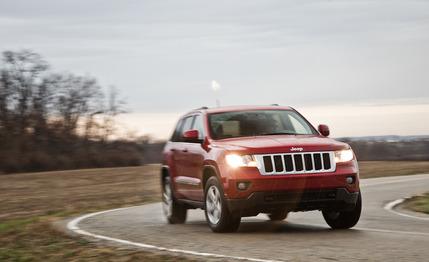 Long-Term Road Test Wrap-Up
Long-Term Road Test Wrap-Up

In SUVland, the Jeep Grand Cherokee is a curious genetic offshoot. While its competitors evolved from enclosed trucks to car-based pseudo-wagons, aping the Jeep’s unibody construction along the way, the Grand Cherokee holds on to off-road credentials long-since forsaken in pursuit of the lucrative lacrosse-mom market. But the GC also offers comfort, extending Jeep’s go-anywhere philosophy to mall parking lots and valet lines.
The fourth-generation Grand Cherokee, new for the 2011 model year, is the product of a broken home. Originally conceived during the DaimlerChrysler era (and sharing components with the Mercedes-Benz ML), this Jeep’s gestation ran through Chrysler’s Cerberus ownership, into Fiat’s current stewardship.
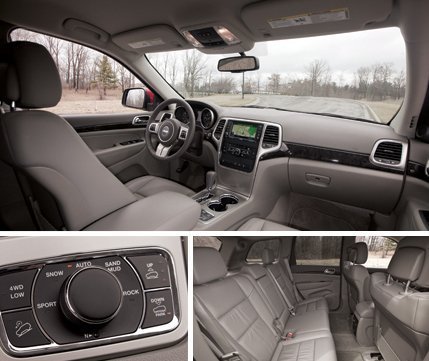
To glimpse the new Chrysler’s potential, and also to sample the new 3.6-liter Pentastar V-6, we requested a long-term test unit. Displaying unusual restraint, we opted for the cheapest four-wheel-drive trim, Laredo (Jeep also sells every model with rear-wheel drive), base price $32,995. To minimize whining in the logbook, we added the $4000 26X package, which includes leather seats with power and heat in the front, dual-zone climate control, rear backup camera, an upgraded stereo with touch screen, remote start, and a 115-volt AC outlet. Also deemed necessary was the $2125 Off-Road Adventure II package, with skid plates, factory trailer hitch, hill-descent control, a full-size spare tire, and height-adjustable air suspension. Optional $225 paint and a $395 navigation upgrade to the infotainment system brought our as-tested sticker to $39,740.
Through its tenure in our office, the GC quickly became a road-trip favorite thanks to its 24.6-gallon fuel tank that allowed 400-mile-plus forays between gas stops. We averaged 19 miles per gallon over our 40,000-mile investigation. There is only one serious off-road adventure documented in the logbook, a three-week trip to Montana by John Phillips, who noted that the on/off-road tires quickly fill with mud and act like slicks. But he praised the cushy ride, which comes at the cost of substantial body roll and low, 0.74-g cornering grip.
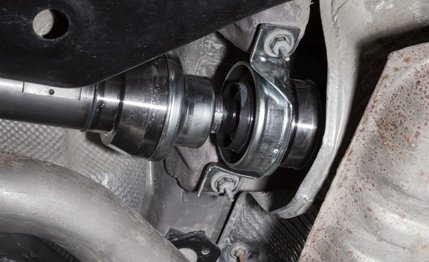
Phillips also noted our biggest issue with the Grand Cherokee: a disturbing clunk in the transmission around 5 miles per hour when slowing to a stop. By that point we had already dealt with the problem at 2700 and 3344 miles, with the dealer first reprogramming the powertrain control module, (responsible for the engine and transmission), then replacing the drivetrain control module (responsible for the transfer case’s operation), as per service-bulletin suggestions. This provided a temporary fix, but the clunk returned and we decided to live with it until 33,860 miles, when the transmission was replaced under warranty so Chrysler engineers could investigate the malady. The diagnosis? The plant had failed to install a retainer snap ring. We also needed a software update to fix problems with the Bluetooth and iPod functions of the radio.
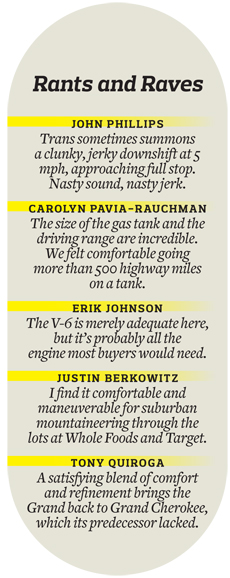
For a go-anywhere SUV, the Grand Cherokee spent a lot of time going to the dealership. We tallied eight service stops, plus five unscheduled stops related to the transmission (the final one due to a missing bracket not installed during the gearbox replacement). The Grand Cherokee has an on-board oil-life calculator that displays a service reminder in the instrument cluster, but regular service at the 16,000-, 24,000-, and 32,000-mile marks is required. In our case the oil changes didn’t coincide, resulting in the extra stops. The five oil changes were about 8000 miles apart, meaning we could have coordinated them with the other services, but we would have missed all that delicious free coffee at the dealership. Our total bill, headlined by the 32,000-mile service ($146), was $464.
The V-6’s 290 horsepower was burdened by the Grand Cherokee’s 5005-pound curb weight, yielding a zero-to-sixty time of 8.2 seconds (improving a tenth of a second by the end of our test). We deemed the power more than adequate for most users, although anyone towing near the 5000-pound rating might prefer the optional 360-hp 5.7-liter V-8 (rated to tow up to 7400 pounds). A general lack of midrange torque in the V-6 left us anxiously waiting during passing maneuvers, and the five-speed transmission would go searching for gears during mild uphill climbs. Another minor gripe was the soft brake pedal, which didn’t seem to provide any stopping power until halfway through its travel.
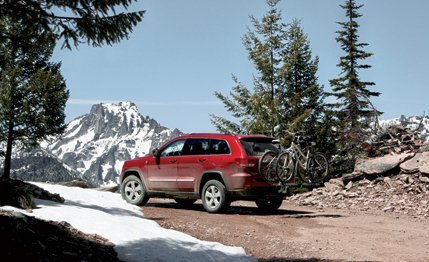
Beyond the transmission issues and a smashed window and laptop robbery on the mean streets of Chicago, our 40,000 miles in the Jeep were without incident. The cabin banished our memories of rental-grade plastics in previous Jeeps (good riddance, Liberty interior) and managed to hold up to heavy use with minimal wear. And the interior not only looks good, it’s comfortable for the long highway hours required to empty the gas tank. Plus there’s all that versatility, both in terms of its cargo capacity and off-road capability. If the Grand Cherokee is a sign of things to come, the future looks bright for Jeep.